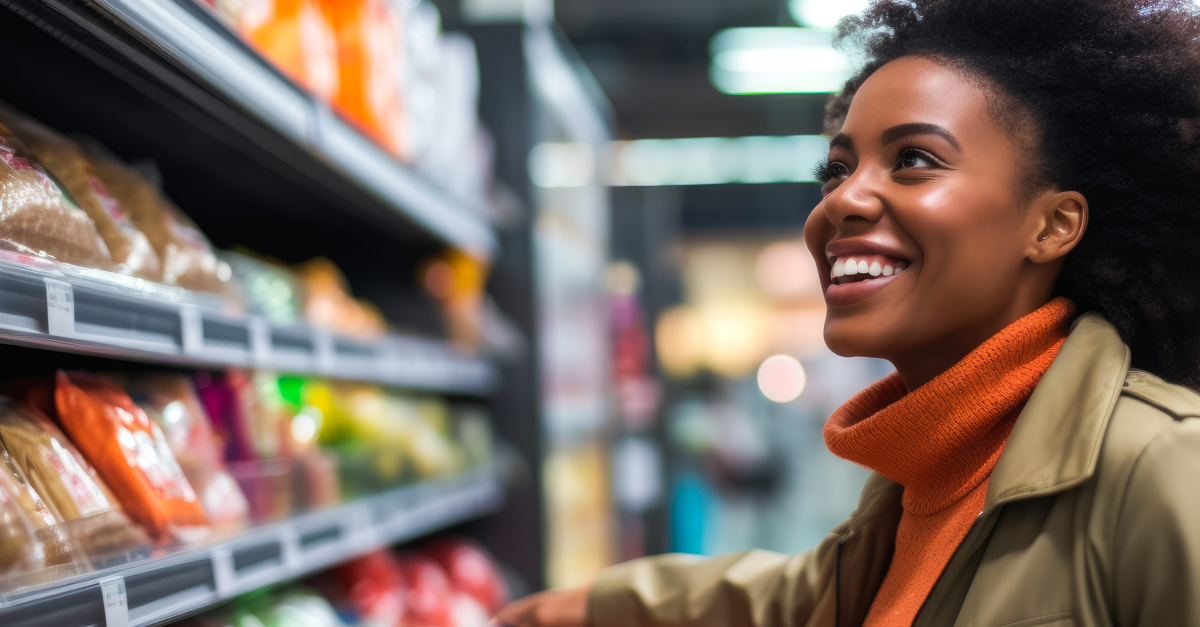Modern gas stations aren’t just places to fill up; they’re dynamic retail spaces with multiple selling opportunities.
Understanding how fuel customers move around the forecourt — and how many of these same customers convert inside the retail store or on-site restaurant — is crucial for operators looking to boost efficiency and profitability.
In this blog post, we'll explore forecourt traffic, including the significance of the forecourt conversion rate and the best methods for measuring and improving it using a combination of technology and human-led tactics.
The Role of Forecourt Conversion in Gas Station Operations
In short, a gas station’s forecourt is the first point of contact for customers. It encompasses the open area at the front of the station, including fuel pumps, signage, and the parking lot. The forecourt is vital for creating positive impressions and driving cross-sells.
Forecourt traffic refers to the movement of customers around this fueling area, and it’s a critical indicator of a gas station’s performance, as forecourt traffic gives operators insight into fuel transactions, how customers interact with various amenities, and opportunities for other purchases.
To effectively measure the impact of forecourt traffic, operators should keep a close eye on their forecourt conversion rate. This metric reflects the percentage of customers who make additional purchases aside from fuel during their visit to the gas station. It’s a good indicator of the station’s ability to convert fuel customers into retail, restaurant, or amenities customers as well.
Forecourt conversion rate is calculated by dividing total forecourt visits by in-store foot traffic and can be measured hourly, daily, weekly, or any other timetable. The resulting figure helps operators evaluate performance across many areas of their business, including:
- Retail Effectiveness: Forecourt conversion rate gives operators insight into how well their convenience store (C-Store)’s retail offerings fit their customer base. A high conversion rate suggests that the business successfully entices fuel customers to enter the store and explore multiple potential purchases.
- Customer Engagement: This metric also shows how engaged customers are when they visit the forecourt. Do they simply drive up, purchase fuel, and leave? Or do they spend time in the C-Store or exploring other amenities, like car washes or air pumps?
- Impact of Marketing & Promotions: Forecourt conversion also reflects how various marketing campaigns and promos affect customers’ buying behaviors and whether they draw more people into the store, influence them to purchase specific items, etc.
RELATED BLOG POST: How C-Stores Can Use BI Data to Combat Inflation
Trends Affecting How Stores Measure Forecourt Conversion
Forecourt conversion rate is a vital and seemingly straightforward gas station performance metric. However, many operators face challenges when it comes to accurately measuring forecourt traffic, which can significantly skew their conversion rate data.
To monitor forecourt conversion, gas station operators must reliably determine how many of their fuel customers convert inside the C-Store. This might sound simple in theory, but tracking individual customers’ movements and purchases is complex in today’s retail environment.
Suppose a customer pulls up to the fuel pump with two passengers in the car. The driver makes a fuel purchase with their credit card, while both passengers enter the store and make separate purchases in cash. Does this count as a conversion even though the individual purchasers and payment methods are completely different? And if so, how can operators accurately track these types of transactions?
Rather than linking conversions to payment methods, or worse, trying to manually account for each customer as they step into the store, operators should implement tech-enabled tools to track forecourt traffic, conversion, and purchases in a way that aligns with the customer journey.
Surveillance and Monitoring Technology
The idea of watching customers’ every move might sound a bit intense, but monitoring their movements within the forecourt and C-Store can generate powerful insights into behaviors and buying patterns. Most gas stations already have surveillance equipment like security cameras and motion sensors installed on-site, so tailoring them to also measure foot traffic is a smart use of resources.
Aside from simply setting up cameras, operators can use AI-powered video analysis to measure customer volumes, find trends and patterns, and analyze dwell times. They might also install sensors that track customers as they navigate the store, which can give operators and managers insight into:
- How people move throughout the aisles
- Where they stop and browse most often
- Whether there are any “dead zones” in the store
Customer Engagement & Loyalty Platforms
Like many other retailers, gas stations are increasingly investing in customer loyalty programs that users connect with via mobile apps. These platforms are invaluable tools for learning more about customers’ preferences and connecting with them even when they aren’t at the store.
Operators can use insights from loyalty programs to tailor offerings, promotions, and product suggestions to individual customers. But the apps they’re hosted on also play a more direct role in forecourt traffic and conversion rates, thanks to their ability to track customers’ locations in real time.
Geofencing & Other Location-Based Tools
Geofencing and similar location-based services have become integral tools for retailers of all types. Geofencing establishes a boundary around the gas station where operators can track customers who've opted into location services.
So, how exactly does it work in practice?
Once customers enroll in a loyalty program, they typically download the associated app onto their mobile device, allowing operators to virtually 'follow' them all over the gas station. These applications use Wi-Fi and a series of sensors to track customers via the MAC address of their cell phones. The resulting data gives operators a wealth of valuable information about customers’ behaviors, including:
- How frequently each customer visits the gas station
- Which areas they visit most often (forecourt, C-Store, car wash, etc.)
- How long they stay in each area
- How long they stay at the gas station overall
Operators can track customers through their cell phones. They can see when a customer stops at the fuel pump and when they enter the store to make a retail purchase, even if they switch payment methods. This gives them next-level insight into forecourt traffic and conversions.
ALSO WATCH: "Automating Data Insight at C-Stores and Fuel Companies," our fireside chat with TXB Stores and ROG Consulting where we explore how C-Stores and fuel companies can use data to become more efficient, customer-focused, and profitable.
Tips for Reporting on Forecourt Conversion
Forecourt conversion rate directly impacts an array of other key performance indicators (KPIs) related to revenue and customer satisfaction, which makes accurate reports and analyses essential for creating a clear picture of business health. For example, Forecourt Conversion ties into:
- Average Transaction Value: Combined fuel and in-store purchases boost average transaction value, resulting in higher revenue per customer visit.
- Customer Retention: High forecourt conversion indicates satisfied, engaged customers who are likely to generate consistent repeat business.
- Revenue Growth: A consistently high conversion rate means a gas station is effectively using the forecourt to drive sales, which contributes to overall revenue growth.
Along with using various monitoring tools to track forecourt conversions, operators should report on their findings and use interactive dashboards to see how forecourt conversion rate relates to and impacts other parts of their business.
A dedicated business intelligence (BI) and analytics solution will automatically combine data from multiple sources, including loyalty platforms, point-of-sale systems, ERP tools, and more, giving operators a clear picture of forecourt and in-store performance.
Then, they can use data visualization tools to analyze their results and share performance insights with store managers, marketers, frontline employees, and everyone else involved in gas station operations. This information gives business leaders next-level visibility into performance, but it also helps everyone make informed decisions about new promotions, tailored customer offers, signage, store layout, and much more.
Using Data to Drive Sustainable Growth
As the market continues to evolve, so will customers’ preferences and buying habits. Operators must embrace technology, stay close to industry trends, and create comprehensive reports and analyses to ensure their business stays ahead of the curve.
By measuring forecourt conversion rate and other critical KPIs, gas stations can enhance forecourt performance and drive sustainable growth. Our free guide outlines the most valuable metrics to track from the forecourt to the back office, including forecourt conversion, operating profit margin, and staff productivity ratio.
Get your copy today to learn how creating the right reports — and acting on the results inside them — will help you make better decisions at every level of your operations.







